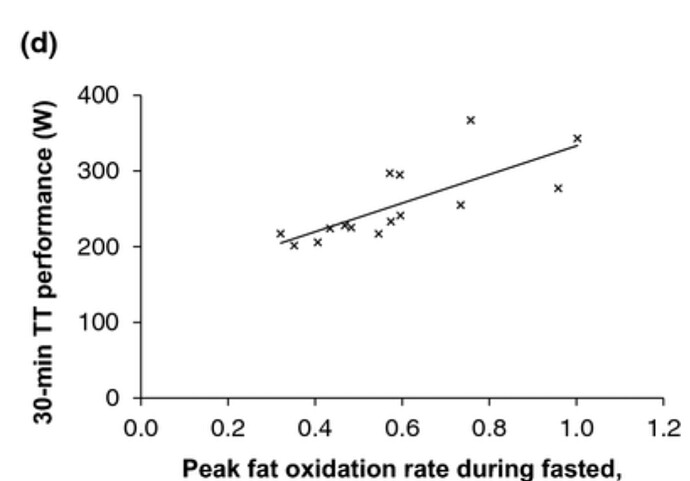No, I’m just saying it would be very odd to be producing 50% or more of your energy from fat above LT2 as your posted graph is showing. I have not seen any evidence anywhere to tell me otherwise.
Yeah I totally did. ![]() I wasn’t responding as much to you as venting about the people who generally push this “sugar bad” stuff. To answer your question, I’m not aware of a long-term study. Would imagine it would be challenging to control but you can also see if there’s metas on things like occurrences of things like type-2 diabetes or pre-diabetes specifically in endurance athletes.
I wasn’t responding as much to you as venting about the people who generally push this “sugar bad” stuff. To answer your question, I’m not aware of a long-term study. Would imagine it would be challenging to control but you can also see if there’s metas on things like occurrences of things like type-2 diabetes or pre-diabetes specifically in endurance athletes.
Well the numbers are being seen in riders tested. Here’s another. I think you’re struggling to find full on research as it a fairly recent research looking at ultra and Ironman which have very different needs to your 1 or 2 hour or even 4 or 6 hour race
I have already read the Jeukendrup study that you pulled the graph from. They tested a 30 min TT which they say “correlates” to 4 mmol lactate, but never actually measured it. Also 80% of the trained athletes were under 0.7 g/min, with the majority under 0.5. There were some outliers, and I don’t argue the fact that it is possible to do 1.0 g/min, I’m just stating that since lactate was never measured, it’s impossible to take this study and say that any of these athletes were using fat at or above 50% while at or above 4 mmol blood lactate. Again, i’m not even saying that’s not possible, but it would not be likely and not under normal circumstances.
You also keep referencing ultra distance events, where athletes are doing more than 6 hours, let’s say 12 hours just for fun. Most of these athletes are probably competing at or (well) below 2 mmol lactate, which of course is possible to utilize fat at or above 50% at that level. My only argument was with that first graph that showed 53% fat as energy at or above 4 mmol.
If memory serves. There’s a paper on tte at mlss in masters runners. They had a fat burn of 30% at mlss
Nowhere did I say it was 100%. But you’ll see it more commonly amongst the groups I’ve already mentioned. As mentioned some ultra endurance athletes have been found to have peak fatox close to 2g/min. Quite something and challenging the assumptions many make.
At 1-2 mmol sure anything is possible. ![]()
